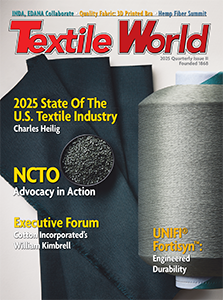GRAND RAPIDS, Mich. — August 13, 2018 — X-Rite Inc. and Pantone LLC today announced that Epic Games’ Unreal Studio 4.20 natively supports the Appearance Exchange Format (AxF™). Developed by X-Rite, AxF is a vendor-neutral format that enables the communication of all aspects of a physical material’s appearance — color, texture, gloss, refraction, transparency, translucency, special effects (sparkles) and reflection properties — in a single, editable file to improve design virtualization. AxF allows Unreal Studio users to load physically-accurate digital material files, convert them to Unreal Engine materials for a consistent look across platforms and use them in a real-time workflow to enhance VR and AR experiences. X-Rite is showcasing the AxF integration with Unreal Studio 4.20 at SIGGRAPH 2018, August 12-16 in Vancouver at booth 401.
AxF is the foundational component of the X-Rite Total Appearance Capture (TAC™) ecosystem, a solution that brings a new level of accuracy and efficiency to the capture, communication and presentation of physical materials in the virtual world. Traditionally, the capture and rendering of complex materials such as special effects paints, meshes and synthetic fabrics have been time-consuming and manual processes. TAC addresses this challenge with a new level of precision in material scanning coupled with an ability to share the resulting data, via AxF, across an expanding set of tools, such as the Unreal Studio real-time visualization solution.
“Integration of AxF in Unreal answers the need of taking physically correct materials into real-time visualization,” said Dr. Francis Lamy, executive vice president and chief technology officer, X-Rite and Pantone. “The TAC ecosystem and AxF allow Unreal Engine users to visualize their creations using physically correct digital materials, providing a new level of realism that results in even more immersive AR and VR experiences.”
“Our customers who want to achieve the highest fidelity to real-world materials can now use the AxF format and scanners from X-Rite to bring measured materials into their UE4-based visualization process. The combination of Unreal Engine and AxF means customers can now better match the virtual world to the real world to make better design decisions,” said Ken Pimentel, Unreal Studio product manager, Epic Games.
Unreal Studio is a collection of targeted resources that accelerates adoption of Unreal Engine and new VR and AR experiences by simplifying workflows and optimizing data, delivering industry-relevant training and assets and providing timely support methods. The latest Unreal Studio 4.20 release focuses on a streamlined workflow that maximizes ease of use and compatibility through the Datasmith plugin. Users can now load X-Rite’s Appearance Exchange Format (AxF) files for an elegant conversion to Unreal Engine materials, resulting in a highly accurate, consistent look of materials across platforms.
AxF is a binary digital file format and is not restricted to a specific device or measurement geometry, spanning single spectrum to full BSSRDF. It is designed to compress raw data from terabytes to megabytes providing third party software applications, such as Unreal Studio, with efficient access to a full set of material appearance characteristics without compromising performance.
TAC Captures Physical Material Appearance at SIGGRAPH
SIGGRAPH 2018 attendees can see a demonstration of X-Rite’s award-winning Total Appearance Capture (TAC) ecosystem and the AxF integration with Unreal Studio at the X-Rite booth 401. Attendees will see how AxF files can be used within Unreal Studio software and applied to photo-realistic scenes and immersive AR and VR experience.
The TAC ecosystem is comprised of the TAC7 scanner, PANTORA™ Material Hub desktop application, and Virtual Light Booth (VLB). Physical material samples are scanned using the TAC7 scanner, which captures appearance properties digitally to create AxF files that store appearance data. The files are stored, managed, viewed and edited in the PANTORA desktop application. The AxF files can be shared with Product Lifecycle Management (PLM), Computer-Aided Design (CAD), and state-of-the art rendering applications including Allegorithmic Substance Designer, AMD Radeon™ ProRender, Autodesk VRED™ Professional 2018, Chaos Group V-Ray, Epic Games Unreal Engine, Gerber Technology YuniquePLM and AccuMark, Human Solutions Assyst Vidya, Lumiscaphe Patchwork 3D, Luxion KeyShot®, Material Exchange platform, Next Limit Maxwell, and NVIDIA Iray®.
The Virtual Light Booth is the industry’s first immersive 3-D visualization environment for evaluating material appearance. It allows users to accurately compare physical samples and digital renderings side-by-side under the same perceptual conditions — from illumination to contextual to observational factors. This helps ensure consistency between digital prototypes and final physical products and empowers designers to make more informed material selection decisions reducing approval cycles and accelerating time to market.
Posted August 13, 2018
Source: X-Rite Inc.




